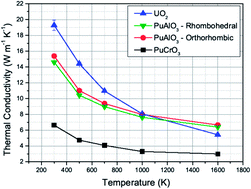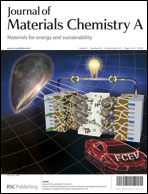Structure, properties and formation of PuCrO3 and PuAlO3 of relevance to doped nuclear fuels
Abstract
We have employed a variety of computational methods to understand the behaviour of Pu, generated by neutron capture reactions in UO2 fuel, with Cr2O3 and Al2O3, two common UO2 fuel dopants. Structure search calculations using density functional theory and empirical potentials show that PuCrO3 and PuAlO3 are likely to form in these systems. The lowest energy structure adopted by both compounds is predicted to be the orthorhombic (Pnma) GdFeO3-type perovskite structure. Relative to UO2, the thermal conductivity of PuCrO3 was calculated to be approximately three times smaller over the explored temperature range and therefore the presence of this phase will impact the microstructure, fission product distribution and gas release properties of UO2-based fuels. In contrast, the PuAlO3 phase had a similar thermal conductivity to UO2. Calculated defect energies suggest that defects in both PuCrO3 and PuAlO3 will be dominated by antisite defects and that their radiation tolerances are similar to that of UO2. Calculation of the solution and partition energies of a range of trivalent cations indicate that minor actinides are likely to substitute for Pu in the perovskite structure having an impact on the in-reactor behaviour of Cr-containing fuels and subsequently the waste reprocessing route.


 Please wait while we load your content...
Please wait while we load your content...